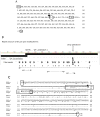Virus-like Particles from Wolbachia-Infected Cells May Include a Gene Transfer Agent
- PMID: 37367332
- PMCID: PMC10299305
- DOI: 10.3390/insects14060516
Virus-like Particles from Wolbachia-Infected Cells May Include a Gene Transfer Agent
Abstract
Wolbachia are obligate intracellular bacteria that occur in insects and filarial worms. Strains that infect insects have genomes that encode mobile genetic elements, including diverse lambda-like prophages called Phage WO. Phage WO packages an approximately 65 kb viral genome that includes a unique eukaryotic association module, or EAM, that encodes unusually large proteins thought to mediate interactions between the bacterium, its virus, and the eukaryotic host cell. The Wolbachia supergroup B strain, wStri from the planthopper Laodelphax striatellus, produces phage-like particles that can be recovered from persistently infected mosquito cells by ultracentrifugation. Illumina sequencing, assembly, and manual curation of DNA from two independent preparations converged on an identical 15,638 bp sequence that encoded packaging, assembly, and structural proteins. The absence of an EAM and regulatory genes defined for Phage WO from the wasp, Nasonia vitripennis, was consistent with the possibility that the 15,638 bp sequence represents an element related to a gene transfer agent (GTA), characterized by a signature head-tail region encoding structural proteins that package host chromosomal DNA. Future investigation of GTA function will be supported by the improved recovery of physical particles, electron microscopic examination of potential diversity among particles, and rigorous examination of DNA content by methods independent of sequence assembly.
Keywords: +1 ribosomal frameshift; GH_25 hydrolase; GTA; alpha-proteobacteria; bacteriophage; horizontal gene transfer; mosquito cell culture.
Conflict of interest statement
The authors declare no conflict of interest.
Figures





Similar articles
-
Muramidase, nuclease, or hypothetical protein genes intervene between paired genes encoding DNA packaging terminase and portal proteins in Wolbachia phages and prophages.Virus Genes. 2022 Aug;58(4):327-349. doi: 10.1007/s11262-022-01907-7. Epub 2022 May 10. Virus Genes. 2022. PMID: 35538383
-
DNA recombination and repair in Wolbachia: RecA and related proteins.Mol Genet Genomics. 2021 Mar;296(2):437-456. doi: 10.1007/s00438-020-01760-z. Epub 2021 Jan 28. Mol Genet Genomics. 2021. PMID: 33507381
-
The Wolbachia WO bacteriophage proteome in the Aedes albopictus C/wStr1 cell line: evidence for lytic activity?In Vitro Cell Dev Biol Anim. 2016 Jan;52(1):77-88. doi: 10.1007/s11626-015-9949-0. Epub 2015 Oct 1. In Vitro Cell Dev Biol Anim. 2016. PMID: 26427709 Free PMC article.
-
High Levels of Multiple Phage WO Infections and Its Evolutionary Dynamics Associated With Wolbachia-Infected Butterflies.Front Microbiol. 2022 Apr 21;13:865227. doi: 10.3389/fmicb.2022.865227. eCollection 2022. Front Microbiol. 2022. PMID: 35531293 Free PMC article.
-
Growth and Maintenance of Wolbachia in Insect Cell Lines.Insects. 2021 Aug 6;12(8):706. doi: 10.3390/insects12080706. Insects. 2021. PMID: 34442272 Free PMC article. Review.
Cited by
-
Co-evolution of gene transfer agents and their alphaproteobacterial hosts.J Bacteriol. 2024 Feb 22;206(2):e0039823. doi: 10.1128/jb.00398-23. Epub 2024 Jan 19. J Bacteriol. 2024. PMID: 38240570 Free PMC article.
-
Wolbachia: Advancing into a Second Century.Methods Mol Biol. 2024;2739:1-13. doi: 10.1007/978-1-0716-3553-7_1. Methods Mol Biol. 2024. PMID: 38006542
References
LinkOut - more resources
Full Text Sources

